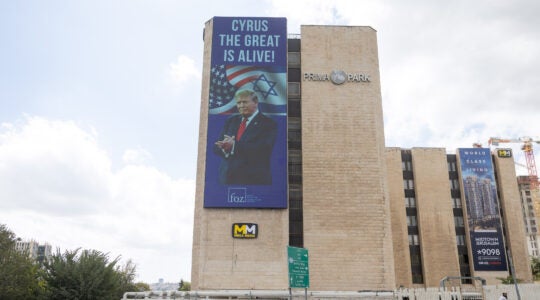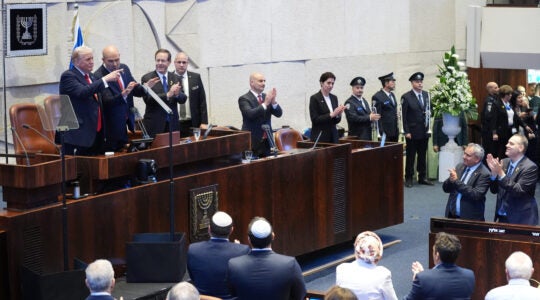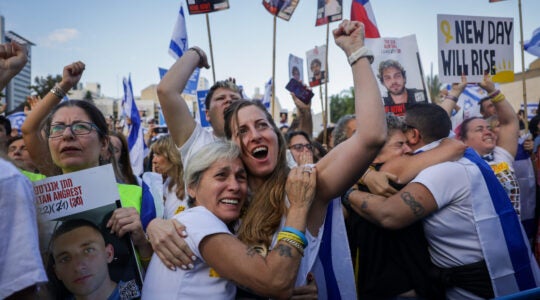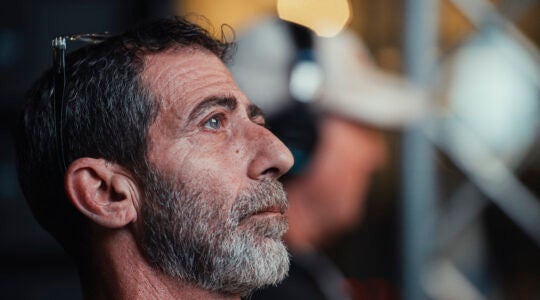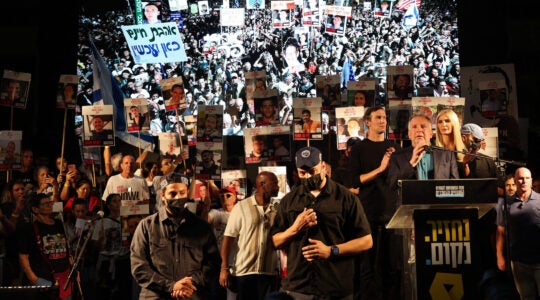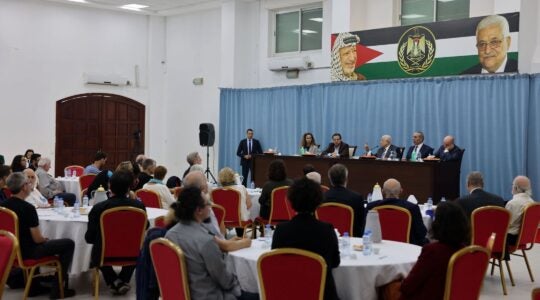RAHAT, Israel (JTA) — Fares Alhozael doesn’t want much from the Israeli government.
The roads in his neighborhood aren’t paved, and earlier this year Israel destroyed his cousin’s house for having been built illegally.
Slumped on a faded bed in the bare, beige, tin-roofed house he shares with his six children and their families, Alhozael, 55, hasn’t worked in more than two decades, since he injured his leg in a produce factory.
But he doesn’t seem to mind. Indeed, he sings the government’s praises and waves off criticism of Israel’s current military operation in Gaza, saying “we need to destroy the entire Islamist movement, whoever raises his head.”
All he wants, he says, is a bomb shelter.
When a rocket is fired from Gaza, Alhozael has just 45 seconds until impact to find shelter, but the nearest one is four minutes away.
“The state must answer us — just a shelter,” Alhozael said. “We asked for one from the politicians, from everyone. They said OK and didn’t do anything. There are 500 people here. Where will they go?”
Alhozael is among thousands of southern Israelis who lack access to a bomb shelter. Two weeks into the latest outbreak of fighting in Gaza, in which a barrage of Hamas missiles has rained down on Israeli cities, many southern Israelis say they hold slim hope for protection during this go-round. They only hope the state answers their requests before the next battle starts.
“The situation is intolerable,” said Hassan Alhozael, Fares’ cousin and the local public school vice principal. “There’s trauma for the Bedouin children. The siren sounds and they have no place to hide. The state turns its back. The government needs to do well by us.”
Security isn’t much better in Rahat’s city center, which features a drab city hall, a modern community center and a traditional open market where merchants sell food, clothes and housewares piled on the ground.

A shelter in the center of Rahat in southern Israel is filled with trash. (Ben Sales)
Some of the newer buildings have protected rooms, but only three small mobile shelters serve the market’s customers. One of them stands in the middle of a parking lot surrounded by trash and flies, its entrance blocked by bags of garbage. Inside, the shelter is filled with torn-up cardboard boxes and an intolerable stench.
Only about half of the houses in Rahat have protected rooms. For the rest of the city’s 60,000 residents, there are only 33 shelters, almost all of them in local schools. If schools weren’t closed for the summer, students would fill the shelters and leave no space for other residents, according to Ahmad Alhozael, head of the city’s security and emergency division and another cousin of Fares and Hassan Alhozael.
“I complain all day and they don’t answer,” said Ahmed Alhozael, pulling up a record of emails that he has sent daily to Israel’s Home Front Command requesting 15 shelters. He hasn’t received a response.
The lack of shelters in Bedouin communities has already led to tragedy. One Bedouin man — Ouda Lafi al-Waj, 32 — was killed and four of his family members were injured after a rocket struck their home in a Bedouin village on July 13. The village had no shelters.
Last week, Israel’s Supreme Court rejected a petition filed by the Association for Civil Rights in Israel requesting shelters for exposed Bedouin neighborhoods. The judges wrote that the state has limited means of defending its citizens and that the choice to leave certain communities exposed was not a result of ethnic discrimination.
“We trust and are certain that if circumstances change in a way that would justify moving shelters from their present location” to the Bedouin neighborhoods, the government would do so, the judges wrote.
Southwest of Rahat, residents of the Jewish town of Ofakim also say the state has let them down. Ofakim has four times as many shelters as Rahat for half the population, but the owners of shops on the ground floor of city hall say they have nowhere to run. In the early days of the conflict, a shelter was available, but they say it has since been moved.
Now when a siren sounds, the shopkeepers stay inside. Employees of a barbershop said they lie on the floor during rocket fire. Municipal employees, meanwhile, have relocated to a protected complex in another neighborhood.
“If the government wants us to be protected it should help us be protected,” said Margo Kadosh, who owns a clothing shop below city hall with her husband, David. “There are shelters, but you can’t get there in time.”
At 6 p.m. Sunday, a brick-paved plaza surrounded by stores and restaurants in central Ofakim was nearly empty. Shuki Matok, a local florist, said business has suffered because people are afraid to venture out.
Ofakim spokesman Maor Zabari acknowledged that the city does not have enough protection and said more shelters had been requested from Jerusalem. But Zabari said that “outdoor shelters are not the issue,” and that in advance of future conflicts the city should focus on long-term investments like outfitting buildings and houses with protected rooms.
Like Fares Alhozael, Ofakim residents remain supportive of the government. But Bedouin youth say they feel disconnected from a country that doesn’t serve them.
Loai Alhozael, 17, Fares’ grandnephew, doesn’t plan on joining the Israeli army after graduating high school like many Israeli Bedouin. Instead, he wants to become a lawyer so he can advocate in court for his family and neighbors.
“We’re disappointed,” he said. “We don’t belong at all [to Israel]. Why should I help a state like this?”
JTA has documented Jewish history in real-time for over a century. Keep our journalism strong by joining us in supporting independent, award-winning reporting.
